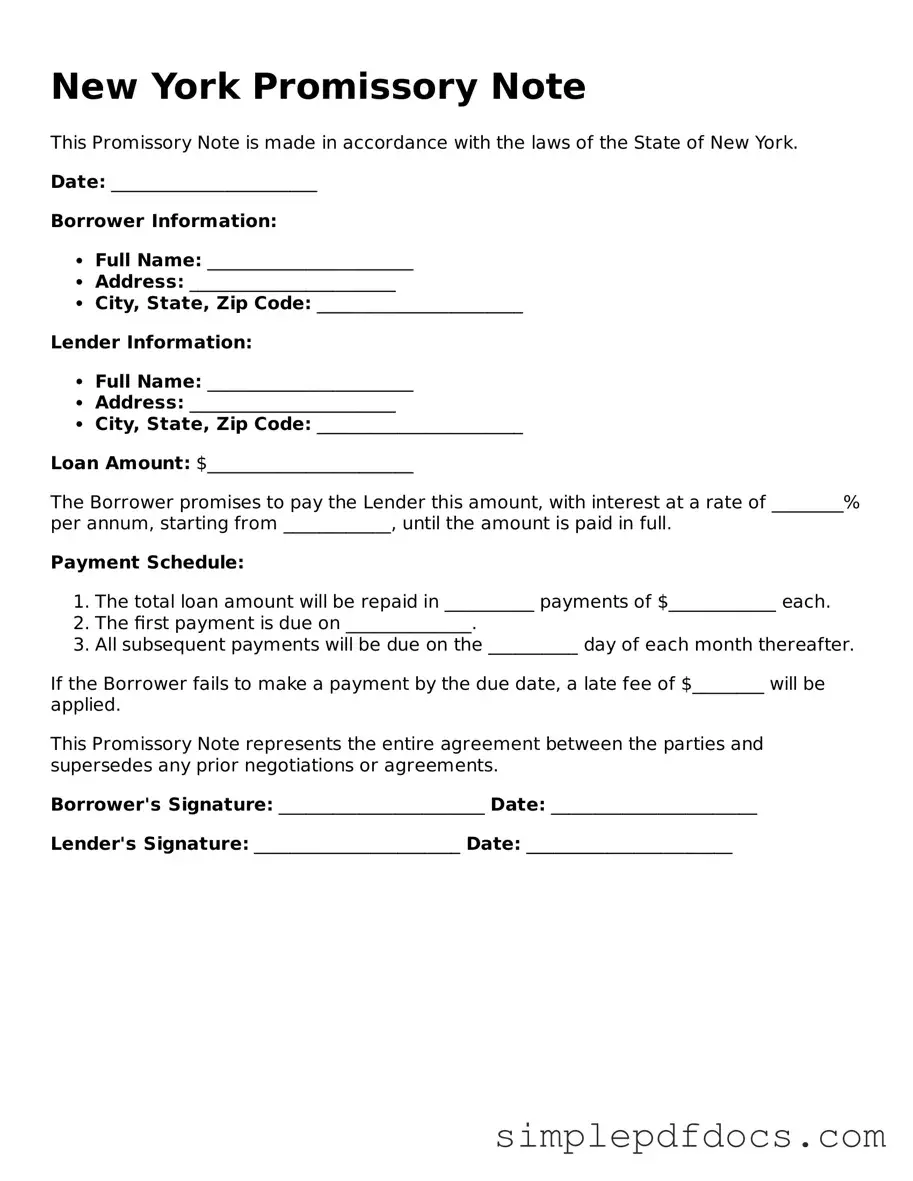When navigating the world of personal and business finance, understanding the New York Promissory Note form is essential for anyone involved in lending or borrowing money. This document serves as a written promise from the borrower to repay a specific amount of money to the lender, detailing the terms of the loan, including the interest rate, repayment schedule, and any applicable fees. It is crucial to note that a promissory note can be either secured or unsecured, which affects the level of risk for the lender. Additionally, the form must include important information such as the names and addresses of both parties, the date of the agreement, and the signature of the borrower, which validates the commitment to repay the loan. By providing clarity and structure, the New York Promissory Note form helps to protect both parties involved in the transaction, ensuring that expectations are clear and legally enforceable. Understanding its components can empower individuals and businesses to make informed financial decisions while minimizing potential disputes.
